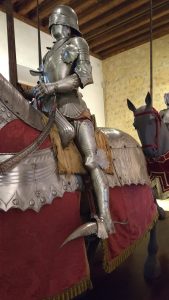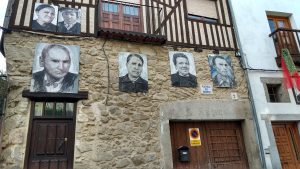
We set out for Salamanca in the afternoon of Dec. 17. It wasn’t far, so we took a looping route through the Sierra de Francia range and drove through some pretty little mountain villages. Mogarraz was one of these villages. It had a definite alpine look with its half-timbered houses. I later learned that this area was settled by French families during the re-population efforts of the Spanish reconquest in the 12th century. The most unique characteristic of this place though are the hundreds of portraits of current and former inhabitants hanging on the houses that they live(d) in.
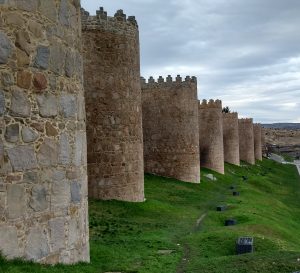
We used Salamanca as our base for exploring the region for a few days. We visited Ávila one day. This is where St. Teresa was from so I felt obliged to visit at least once. This town makes a special sweet, yemas, which are egg yolk candies. They seem to be an acquired taste, as neither of us cared for them. The best part of Ávila was the immense wall with its many towers. The walls are the largest fully illuminated monument in the world according to Wikipedia.
The city of Salamanca was founded by pre-Roman Celtic tribes and has the oldest university in Spain which was founded in 1134. It’s lovely sandstone buildings give a warm look to the ornate architecture. I found it interesting that they have a new cathedral built right up against the old cathedral. The old part of town is especially beautiful at night as it is illuminated.
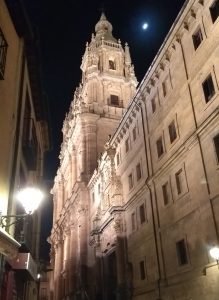
Next on our agenda was Segovia. We stayed just outside the walls of the old city and walked to see the famous Roman aqueduct. It is quite impressive as it contains no mortar. We visited the Alcázar, or castle, which is said to be one of the castles that inspired Walt Disney to design his Cinderella castle. Inside the castle was a museum that had a collection of armor for men and horses. Some of the suits were so small they looked like they were for children. This castle is where Isabella was staying when she became Queen of Castile.
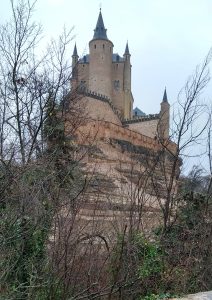
The last night of our road trip was spent in Peñafiel, a small town in the heart of the Ribera del Duero D.O. We visited the castle/wine museum and had a guided tour of the castle in Spanish. We were lucky that there was a another woman in the group that spoke English and did a little interpreting for us. We learned how the castle had been designed to collect rainwater in a cistern and that prisoners were thrown into a deep pit and left to their fate.
We heard that there were going to be strikes in Barcelona on the day we planned to return. The Catalans were protesting a cabinet meeting of the Spanish government to be held in Barcelona. We considered waiting until the next day to return but thought it would probably be mostly over by evening. Maybe it was, but the traffic was still crazy. We did finally manage to get to the train station and return our car much to our relief.
